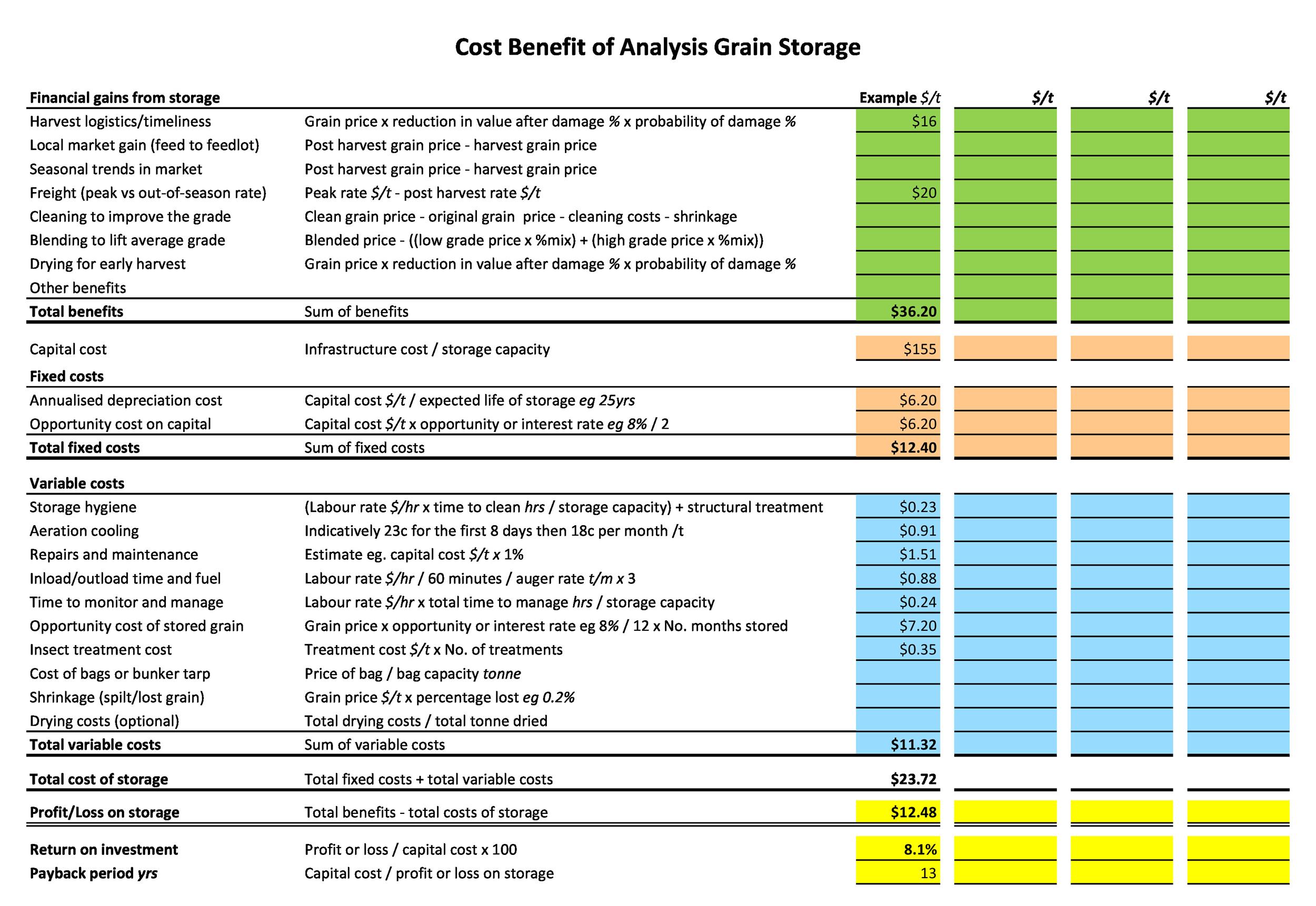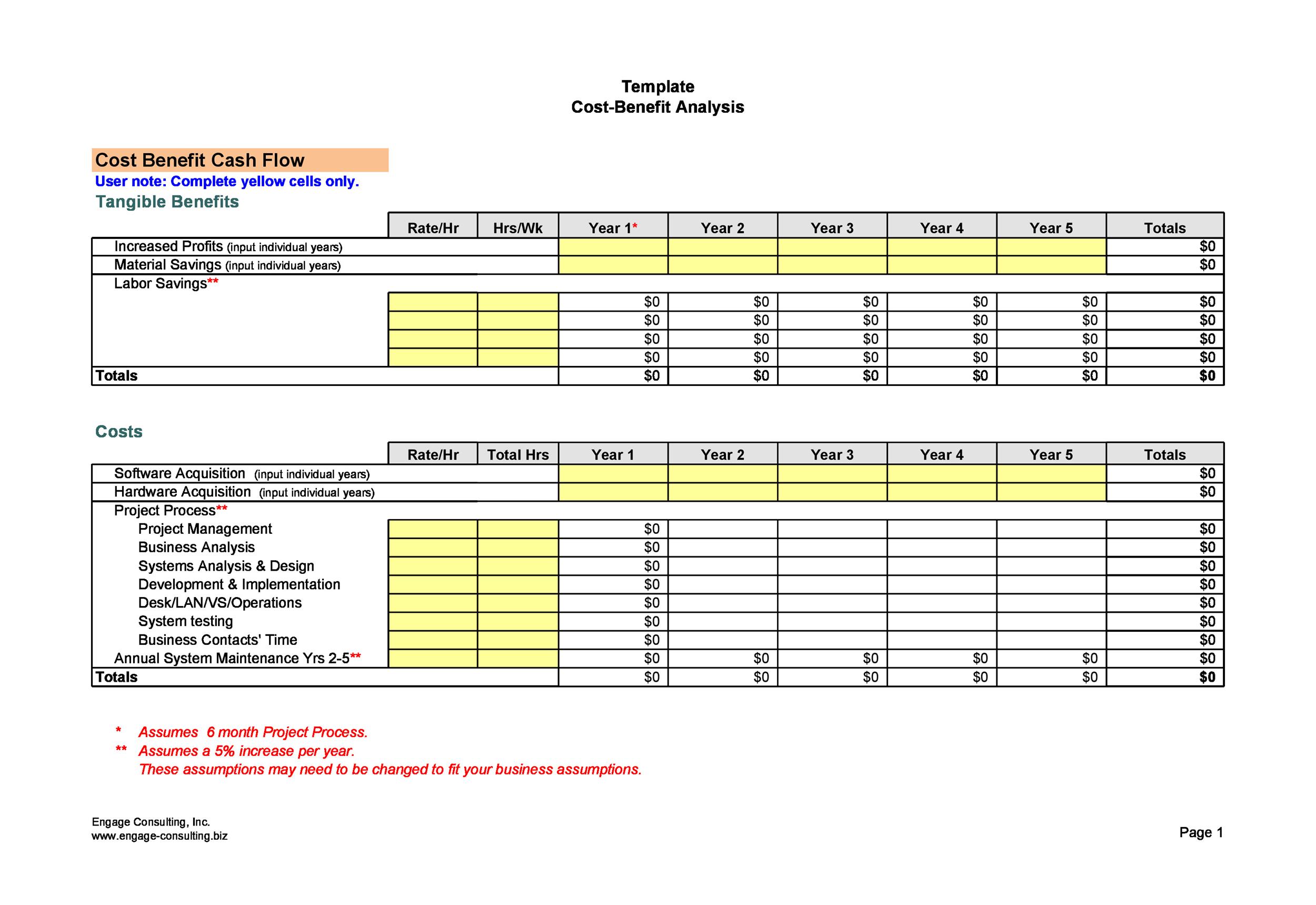Looking to make a wise business decision? How about using a Benefit Cost Analysis Example - which is a tool used to calculate the potential benefits and costs of a project or decision. By conducting a cost-benefit analysis, it helps to understand the feasibility of a project or decision, identify the best course of action, and make informed decisions.
What is a Cost-Benefit Analysis?
Define the Term
A cost-benefit analysis (CBA) is a process used to analyze the benefits and costs of a specific project or decision to aid in making informed decisions. The goal of a CBA is to ensure that benefits outweigh any associated costs of a decision.
You can conduct a cost-benefit analysis in nearly any decision-making process. In business, it's often used to decide whether to expand, improve or cut a product line. In public policy, it is used to decide on policies, regulations or public investments. CBA allows you to understand the costs and benefits of a decision, and to help you weigh the decision and determine the best course of action.
How to Conduct a Cost-Benefit Analysis
Identify the Project or Decision
The first step is to identify the project or decision that the cost-benefit analysis will be conducted on. Once established, it's essential to create a clear vision and objective of the project or decision to ensure all factors are accounted for.
List All Costs and Benefits
The next step is to list all costs and benefits associated with the project or decision. This should include the short-term and long-term costs, as well as the benefits.
Assign Value
Assigning a value can be tricky, but it is a vital aspect of the CBA process. Once all costs and benefits are listed, assign a monetary value to each of them. This could be the actual cost of the item or the estimated value.
Compare
Compare the costs and benefits to determine whether the benefits outweigh the cost or vice versa.
If the benefits outweigh the costs, the project or decision should be pursued. If the costs outweigh the benefits, the project should be reconsidered, postponed or cancelled.
CBA Example
Cost-Benefit Analysis Example 1
This cost-benefit analysis example evaluates both the costs and benefits associated with hiring additional employees in a retail store.
- The cost of hiring the additional employees includes salary, benefits, and training.
- The benefit of hiring additional employees is increased customer satisfaction, resulting in higher sales, and increased efficiency.
By adding additional employees, it is expected that the increased efficiency and sales will outweigh the cost of hiring and training the new employees.
Cost-Benefit Analysis Example 2

This cost-benefit analysis example evaluates the benefits and costs of upgrading a computer system in an office.
- The cost of the upgrade includes the expense of purchasing the new system, installation, and employee training.
- The benefit of upgrading the system is smoother performance, increased productivity, and improved efficiency.
From the cost-benefit analysis, it's concluded that the benefits outweigh the costs, and the upgrade should be pursued.
Cost-Benefit Analysis Example 3

This cost-benefit analysis example is used to evaluate the decision to either replace or repair an outdated piece of machinery.
- The cost of replacing the machine includes the expense of purchasing the new machine and additional employee training.
- The cost of repairing the old machine includes the cost of labor, materials, and time spent.
- The benefit of replacing the machine is improved productivity, performance, and efficiency.
After comparing the costs and benefits, it's concluded that replacing the machine is the best course of action, as it more satisfyingly meets the company's long-term objectives.
Tips and Ideas for Conducting Cost-Benefit Analysis
- Consider all relevant costs and benefits, even those that are difficult to measure, such as employee loyalty and prestige.
- Use realistic estimates for all costs and benefits.
- Consider the timing of benefits and costs, as they will fluctuate over time.
- Involve a variety of stakeholders for accuracy and better decision-making.
- Factor in unlikely scenarios, such as changes in regulations or fluctuations in the industry.
Final Thoughts
CBA is an effective tool for making informed decisions, and cost-benefit analysis examples can help you understand how to conduct and use it for your benefit. Conducting CBA can help you make more precise, more objective business decisions, allowing you to identify the best course of action with the most significant benefits. By weighing the costs and benefits associated with a decision or project, you can ensure that you are making informed, thoughtful decisions.
Find more articles about Benefit Cost Analysis Example


